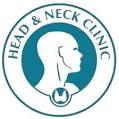Oral Cavity
The oral cavity is an anatomical site defined by an area that includes the lips, gums, buccal mucosa, gingiva/alveolar ridge, hard palate, the floor of the mouth, and oral tongue (anterior 2/3). The vestibule is comprised of the buccal and labial aspects of dentition, as well as the mucosa of the alveolus and wet border of the lip. Stratified squamous epithelium lines the majority of the oral cavity, and aberrancy in this epithelium is often what gives rise to premalignant oral lesions.
Cancer ranks either frst or second among the leading causes of death before the age of 70 years across 91 out of the 172 countries worldwide Te GLOBOCAN
2018, reported 18.1 million new cancer cases and 9.6 million deaths globally [2]. By 2040, the cancer incidence and mortality are expected to rise to 29.5 million and
16.3 million, respectively New and challenging problems — rapid urbanization, population ageing, inactive
and unhealthy lifestyles, indoor and outdoor air pollution, etc., are responsible for the emerging cancer burden
across the globe, majorly impacting the middle-to-low socio-economic countries including India [3].
Premalignant Lesions
The most commonly described premalignant oral lesions are leukoplakia, erythroplakia, lichen planus, and submucous fibrosis. This review will describe the etiology, pathophysiology, pertinent history, and exam findings, as well as management options for these oral cavity malignant precursors.
Oral premalignant lesions occur in roughly between 1.5% and 4.5% of the world’s population and disproportionately affect men compared to women. The highest rates were found in Asian, South American, and Caribbean populations, as geographical variance exists due to differing rates of tobacco and alcohol consumption. Oral premalignant lesions account for 17% to 35% of all new cases of oral cavity cancer and undergo malignant transformation between 0.7% and 2.9% annually.
Evaluation of oral lesions requires thoughtful evaluation and close attention to physical exam findings. In assessing a patient with a possible premalignant oral lesion, the clinician must elicit the length of time the lesion has been present, the evolution of the lesion (change in character or size), presence or absence of pain or recent dental trauma, bleeding, associated dysphagia, odynophagia, trismus, or weight loss, as well as the history of smoking or alcohol exposure. Special attention to medical history, including autoimmune disorders or history of solid organ transplant, is vital, as these patients are at higher risk of developing oral cavity carcinoma.
Treatment and Mangement
The most commonly described premalignant oral lesions are leukoplakia, erythroplakia, lichen planus, and submucous fibrosis. This review will describe the etiology, pathophysiology, pertinent history, and exam findings, as well as management options for these oral cavity malignant precursors.
Oral premalignant lesions occur in roughly between 1.5% and 4.5% of the world’s population and disproportionately affect men compared to women. The highest rates were found in Asian, South American, and Caribbean populations, as geographical variance exists due to differing rates of tobacco and alcohol consumption. Oral premalignant lesions account for 17% to 35% of all new cases of oral cavity cancer and undergo malignant transformation between 0.7% and 2.9% annually.
Evaluation of oral lesions requires thoughtful evaluation and close attention to physical exam findings. In assessing a patient with a possible premalignant oral lesion, the clinician must elicit the length of time the lesion has been present, the evolution of the lesion (change in character or size), presence or absence of pain or recent dental trauma, bleeding, associated dysphagia, odynophagia, trismus, or weight loss, as well as the history of smoking or alcohol exposure. Special attention to medical history, including autoimmune disorders or history of solid organ transplant, is vital, as these patients are at higher risk of developing oral cavity carcinoma.
We perform laser excision for all the above conditions.
– Importance of Patient Education
Patient education and deterrence of tobacco, alcohol, and betel nut exposure are essential to preventing further epithelial toxicity and oral premalignant disorders.
We at our center also emphasis and conduct tobacco cessation programs.
– Oral Cancers (mouth cancers)
Oral cancer is caused by a combination of genetic and environmental factors. It occurs when normal tissue (called epithelium) in your mouth becomes malignant. Various other risk factors can increase your chances of getting oral cancer, including: Smoking tobacco or drinking alcohol Heavy alcohol consumption. Recent heavy exposure to ultraviolet radiation or repeated exposure to sunlight.
Approximately 1.5 million people are diagnosed with oral cancer in the United States each year.Wearing dentures or carrying loose change in your pockets increase your risk of developing oral cancer by up to 45%.Cigarette smoking is also a major cause of oral cancer as it increases your risk by approximately 20%.
As the most common type of oral cancer, oral squamous cell carcinoma (OSCC) is also the most dangerous form because it’s highly aggressive and often resistant to standard treatment.
Various premalignant conditions like leukoplakia ( white patch) , Erythroplakia ( red patch ) , Submucous fibrosis ( leading to difficulty opening mouth ) and non healing ulcer in the mouth can lead to cancer.
Advance stage for oral cancer treatment is possible.
Although survival is better in early stage cancers .Surgery or Radiation are choice of treatment for early stages while for advance stages it is multimodality treatment.
Standards of Treatment
Well Communication
Infection Prevention
10+ Years Experience
Why Choose Us
- Experienced Specialist Doctors
- Excellent Nursing Care
- Excellent Patient Care
- Friendly Ambience
- Equal treatment


